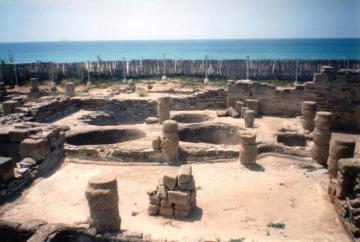Christopher Howgego, Kevin Butcher, Matthew Ponting, and Volker Heuchert
The Antonine period and the Antonine period in Egypt in particular have become central to current studies of the Roman economy. There is the debate between Wilson and Scheidel about whether per capita Roman economic growth continued throughout the first two centuries AD or stagnated already from the Augustan period. There is also Rathbone’s study of Egyptian prices, the only useable series from anywhere in the Empire, which sees the doubling between AD 160 and 190 as the only significant change between AD 45 and AD 274/5. This picture underpins an important paper by Temin on the causes of inflation in the Roman World in general.
The Antonine Plague, the impact of which is measured most securely from Egyptian evidence, potentially assumes great importance here: identified by Rathbone and Temin as the exogenous shock that caused the structural shift in prices and by Wilson as that which ended economic growth. The Plague has loomed large over recent discussions of the economy. It is obvious that thinking has been influenced by the much better documented Black Death. Unfortunately, attempts to substantiate the impact of the Plague in documentary and epigraphic evidence have been shown to be ‘Not Proven’. (Note Greenberg’s delightfully titled ‘Plagued by doubt’.) Modern estimates range from slight to apocalyptic. Even in Egypt, with its unparalleled level of papyrological documentation, attempts to pin quantified socio-economic change on the Plague have proved hard to sustain. At least the severity of the Plague itself in Egypt does seem to command a degree of consensus:
‘No one disputes that the Antonine Plague, which was carried into Egypt in AD 166/7, caused over the next decade a dramatic aggregate population loss, probably of around 20–30 percent to judge from some attested cases . . .’ (Rathbone 2007: 700)
It is indeed plausible that Egypt was badly hit by a plague spreading from the East. Alexandria, as a major maritime city, would have been a magnet, the province was heavily urbanized and densely populated, and the Nile would have been an effective conduit. The earliest evidence adduced by Duncan-Jones for an impact on Egypt is in AD 167/8.




